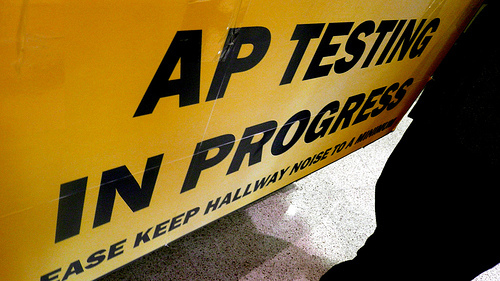To AP or Not to AP

 Advanced Placement tests offer a number of advantages to high school students, including weighted GPAs and college credit. More students take AP tests these days, but more students fail them.
Advanced Placement tests offer a number of advantages to high school students, including weighted GPAs and college credit. More students take AP tests these days, but more students fail them.
According to USA Today, AP enrollment jumped from 704,000 to 1.7 million students between 1999 and 2009. However, failing scores, defined as a 1 or 2 out of 5, rose from 36.5% to 41.5%.
Students’ performances have shifted unevenly. Scores for AP Physics have generally increased, while scores for AP English Literature have dropped (reflecting the world’s new infatuation with math and science).
Geography may also affect the high fail rates. In the South (roughly Texas to Delaware), nearly half of all AP tests earned a failing grade. This represents a significant statistical difference from the rest of the country.
New Mexico, Arkansas, Mississippi, and West Virginia contain the lowest scoring test-takers. In those four states, AP test-takers failed between 55% and 70.3% of all exams. Yikes.
AP credits fulfill many general education requirements and can improve one’s college career immensely. Fewer gen eds can equate to early graduation and thousands of saved dollars. Fewer gen eds can also free up precious college time to take fascinating yet semi-irrelevant courses of one’s choice.
The rigor of AP courses surely differs from high school to high school. However, an AP test fee is a great investment—as long as you pass the test.
See Penn State’s AP course equivalencies for more details.
[Pic]
Your ad blocker is on.
Please choose an option below.
Purchase a Subscription!




